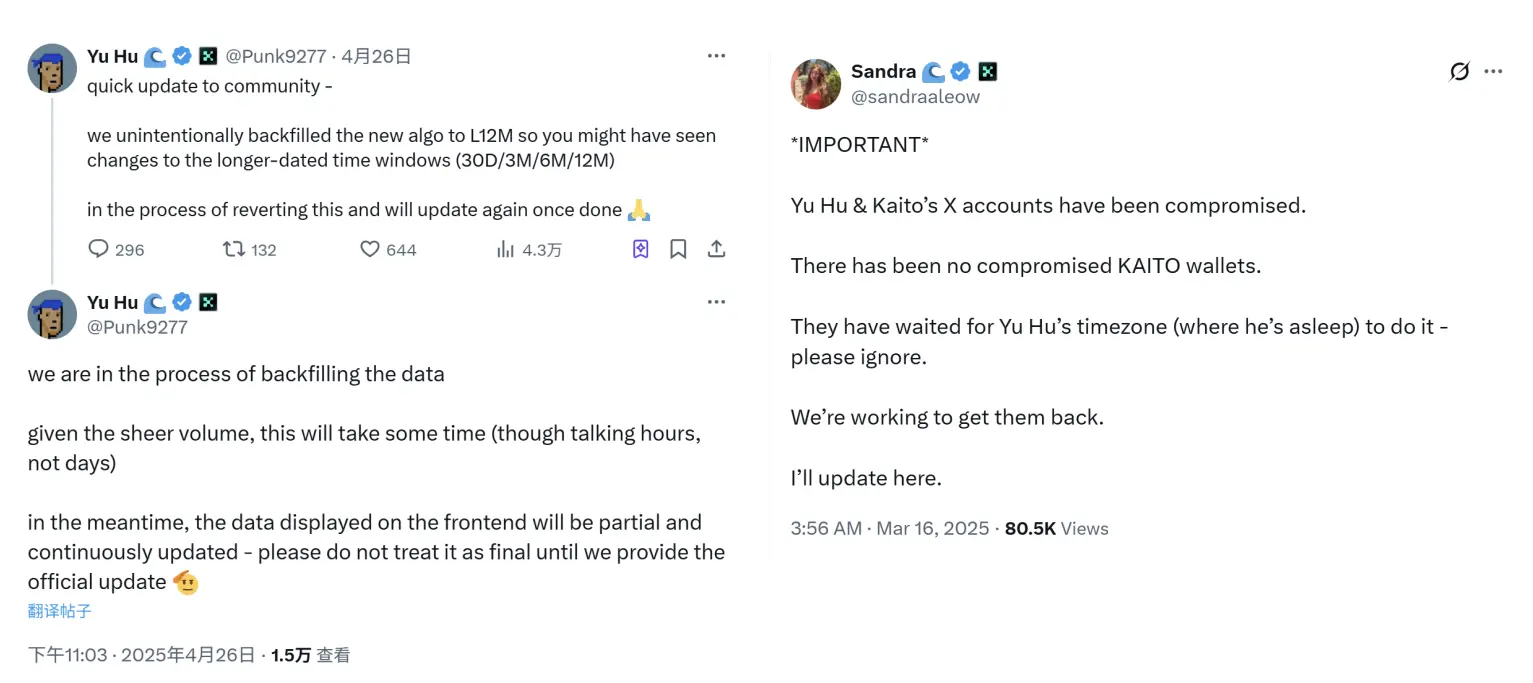Author: Fairy, ChainCatcher
Editor: TB, ChainCatcher
Is it “Yap-to-Earn” or “Earn-to-Leave”?
In the Crypto world, "attention" is gradually becoming an asset that can be priced. Kaito is a star InfoFi project that has emerged in this context. Backed by top capital such as Dragonfly and Sequoia, Kaito was once regarded as an innovator of "information financialization".
However, in just a few months, more and more voices began to question its algorithm mechanism and ecological impact. Kaito wants to use AI algorithms to grab users' attention, but at the moment, the community seems to have lost patience first.
Is the creator ecosystem destroyed?
The water content issue has been controversial since Kaito launched the "Yap-to-Earn" mechanism. The X platform is full of "industry in-depth analysis" posts with similar styles. On the surface, they are full of professional terms and structured analysis, but in fact, the content is empty, the interactive content is superficial, inefficient, repetitive, and born for profit.
Community member @0xcryptoHowe once described Kaito's dissemination mechanism as "Crypto version of elevator advertising." He pointed out: "Kaito's long-tail traffic effect is essentially like elevator advertising, which is repeated in a closed space and pushed in different time periods." For the audience, this is indeed a method of quick memory and exposure, but problems also arise: when the platform is occupied by "homogeneous content", KOLs are pushed by algorithms to produce repeatedly, and ultimately form an information closed loop - like being locked in a "closed elevator" that never stops playing advertisements, and it is difficult to access truly valuable new content.

At the same time, many people questioned Kaito's mechanism for "freeloading" the traffic of mid-level creators. Crypto KOL @connectfarm1 once pointed out that some mid-level accounts, whose single content value starts at 500U, are willing to accept returns far below the market price for Kaito. In reality, this strategy not only depresses the real value of the content, but also allows some creators to only exert 50% or even less expressiveness.
Kaito may be making the criteria for judging content creation monotonous, and tying creators into a system oriented towards "algorithms" and "scores". As community user @0xBeliever said: "There are many criteria for judging kols, but the emergence of Kaito makes it a bit monotonous."
Team mistakes
In addition to the mechanism controversy, the Kaito team has also encountered some minor incidents at the operational level recently.
On March 16, the X account of Kaito AI and its founder Yu Hu was hacked. Team member Sandra posted on the X platform that "the attacker chose to launch the attack late at night in Yu Hu's time zone and took control of the account while he was sleeping."
Then on April 27, founder Yu Hu posted that the platform accidentally backfilled the new algorithm to the past 12 months, causing users to see a longer time window and incomplete front-end data.
Although the two incidents themselves did not cause serious consequences, the successive minor flaws have also aroused everyone's concern about its stability.

The controversy over the “ relationship-focused ” algorithm
Kaito's core selling point is its AI-driven content scoring algorithm, which claims to be able to identify valuable Web3 content. However, as users use it more deeply, this algorithm has frequently caused controversy.
In just 24 hours, user @Jessethecook69 ranked ninth in the world and first in the Chinese region on the Kaito Yapper list with only three "marginal" pieces of content. This makes people wonder: Is such an algorithm really filtering out valuable information?
Many users pointed out that Kaito places less weight on the number of views, and the algorithm focuses more on the interaction between high-impact accounts. What’s worse is that some ICT (Inner Crypto Twitter) have begun to “band together”, further amplifying this algorithm bias.
Crypto KOL @sky_gpt bluntly said that Kaito's algorithm is essentially designed to seize the market of institutions and top KOLs, which seriously damages the ecology of ordinary creators. He pointed out that a 300,000-word content he wrote received almost the same score as a 2k advertising post that a project paid to buy, while non-Kaito-related content was systematically suppressed in the algorithm. "The top 50 KOLs on the list are making a lot of money, and others have almost no way to grow," he wrote, "Kaito is cutting off the path for newcomers to rise."

When newcomers are trapped in the invisible ceiling of algorithms and when creators are forced to cater to algorithmic preferences, we can't help but ask: Is an AI-driven content platform reshaping the information order or replicating the old power logic?





